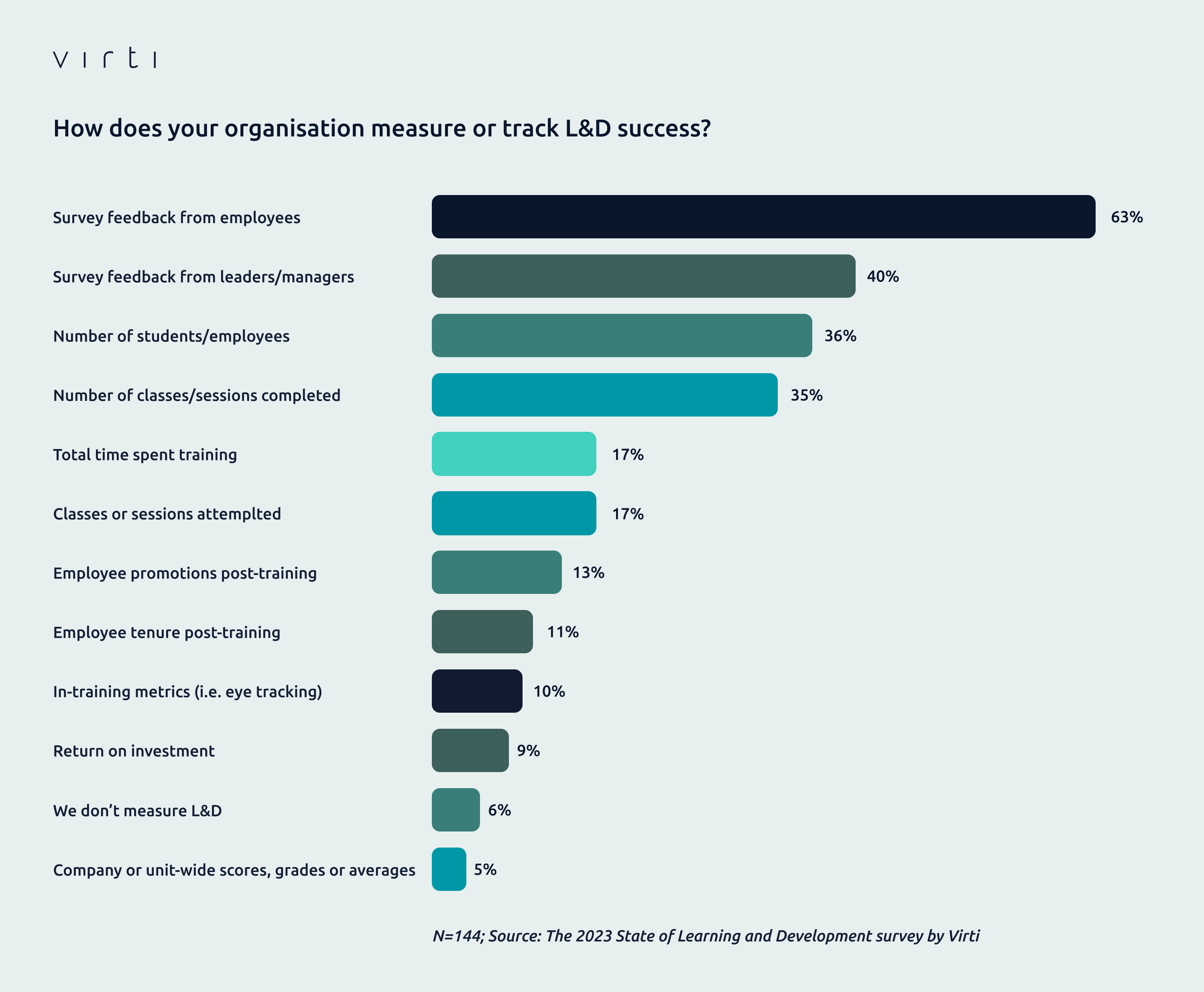The 10 Most Popular Ways Learning and Development Professionals Are Measuring Success

Nearly seven in 10 respondents agree or strongly agree that their learning and development (L&D) department is successfully executing its mission, according to a recent survey we conducted.
How are they measuring success?
Most L&D professionals said their organization measures the success of L&D through employee surveys (63%). There’s little doubt that polling respondents immediately after a class is an efficient way to gather both quantitative data and qualitative feedback on any given training course. Yet many also use a wider range of metrics as well, according to the findings.
How L&D professionals are measuring success
While surveying learners was the most prominent answer, respondents identified other metrics they capture. Here’s a list of 10 ways L&D professionals said they are measuring success:
- Survey employees. 63% survey employees;
- Survey managers. 40% survey leaders/managers;
- Total trained. 36% tally the number of students/employees trained;
- Courses completed. 35% count the classes or sessions completed;
- Classes attempted. 17% measure the classes or sessions attempted;
- Time spent training. 17% calculate the total time spent in training;
- Promotions. 13% track employee promotions post-training;
- Tenure. 11% monitor employee tenure post-training;
- Eye-tracking. 10% analyze in-training metrics (i.e. eye-tracking); and
- ROI. 9% assess the return on investment.
It’s interesting to note that fewer than one in 10 organizations attempt to calculate the return on investment (ROI) of L&D. In addition, another 6% do not measure L&D at all.
This is a warning flag, as most business functions, including L&D, will require some sort of data-driven analysis to justify budgets.
There’s more detail in the full report which is available for download here:
The 2023 State of Learning and Development Report

